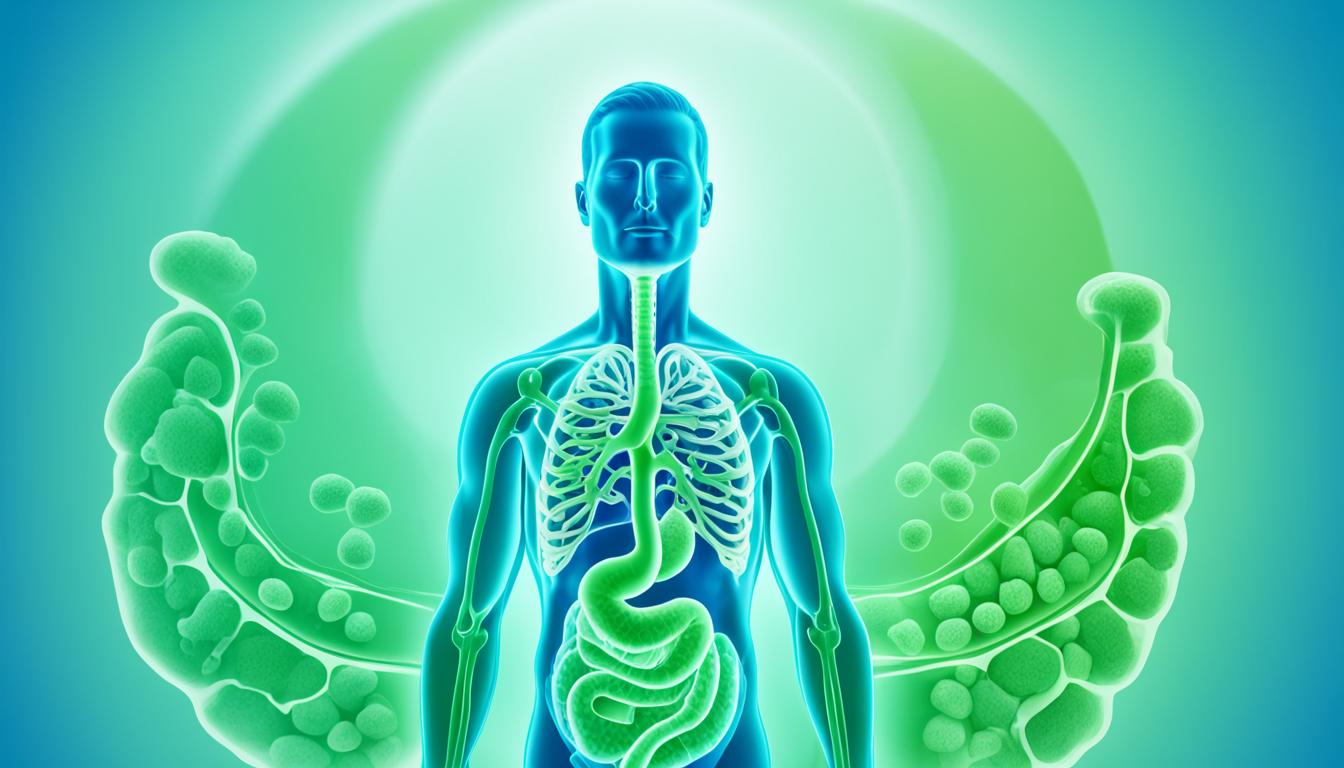Colic syndrome in infants causes frequent and persistent fussiness. Healthy babies with colic might cry over 2 to 3 hours a day, usually in the evening. The exact cause is not clear, but food sensitivities, overfeeding, gas, and digestion problems could be factors. Signs of colic include crying around the same time each day, intense fussiness, and being hard to soothe. The baby’s mood might also change a lot.
Treating a baby with colic involves several methods. These include breastfeeding, pacifiers, warm baths, and mom’s close holding. Drugs to help with gas and probiotics can also be used. Over time, usually within 3 months, colic fades on its own. Parents can also learn how to deal with their baby’s crying fits better.
Key Takeaways:
- Colic syndrome causes frequent and persistent fussiness in infants.
- Babies with colic often cry for more than 2 to 3 hours a day.
- Colic may be related to factors such as food sensitivities, overfeeding, gas, and improper digestion.
- Treatment for colic involves a combination of measures such as breastfeeding and using drugs to reduce gas production.
- Colic usually resolves on its own after 3 months.
Causes of Colic in Infants
The reasons behind colic in infants are not entirely clear. Some experts think it might be because of food sensitivities and allergies, overfeeding, or occasional gas and digestion issues.
Food issues, like food sensitivities, can cause tummy pain and bloating. Babies might cry a lot if they are not handling their food well. Parents should watch what their baby eats to spot any problems.
Feeding babies too much or not burping them can cause colic too. Overfeeding usually leads to an upset stomach. And when gas can’t get out, it makes the baby feel bad.
Young babies have underdeveloped digestive systems. This means they might not be able to digest food properly. Their bodies are still learning how to process milk or formula, triggering colic.
Parents should learn about these causes and talk to their doctor. Working with healthcare providers can help find the right colic management. This way, parents can make their baby more comfortable and get through this tough stage.
Diagnosing Colic in Infants
Diagnosing colic in infants is important for their care. Healthcare providers need to know the signs. They can give help and treatments to make the baby feel better.
Common signs of colic include hard crying and being irritable. The baby might not calm down easily. They may cry at the same time every day and seem to change a lot. Parents should watch for these signs.
Healthcare providers will check the baby’s symptoms and do a full exam. They will look for other reasons why the baby might be uncomfortable. Colic is often diagnosed by excluding other health issues first.
It’s key that parents talk openly with the healthcare provider. Giving detailed info about the baby’s behavior helps in the diagnosis. It’s all about finding the best care for the baby.
Diagnosing Colic vs. Other Conditions
| Characteristic | Colic | Other Conditions |
|---|---|---|
| Symptoms | Intense and prolonged crying, difficulty soothing | Varied symptoms depending on the underlying condition |
| Crying Patterns | Crying at a fixed time each day | No specific crying patterns |
| Duration | Usually resolves by 3-4 months of age | Symptoms may persist or worsen over time |
| Other Symptoms | Changes in the baby’s state, discomfort after feeding | Additional symptoms specific to the underlying condition |
It takes careful work to diagnose colic in infants. Parents and doctors need to talk and observe closely. This collaboration is vital for an accurate diagnosis and the best care for the baby.
Stem Cell Therapy for Colic Relief
Stem cell therapy is an exciting new way to handle colic. In Thailand, top-notch clinicians are leading the use of it for colic in babies. This method uses stem cells, which can change into various cell types, to help with the causes of colic.
This treatment is still new, but it promises great relief for babies with colic. Its goal is to deal with the core of colic for long-term relief. This helps not only the baby but their whole family too.
If you’re a parent looking for answers, talking to healthcare providers is key. They’re experts who can explain the benefits and risks of stem cell therapy. Being at the forefront of medical advancements, Thailand offers a reassuring path for parents considering this solution.

